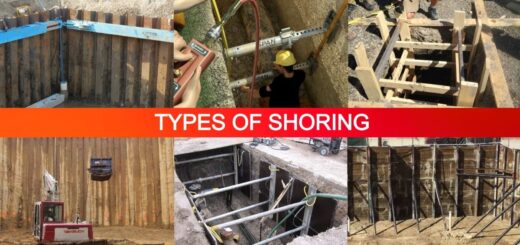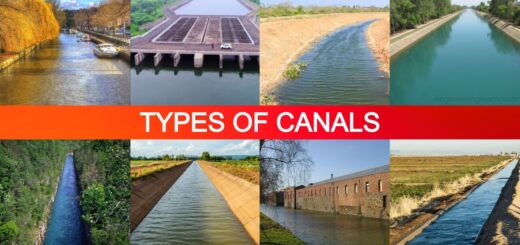7 Types of Culverts – Introduction, Material, Advantages & Disadvantages [Explained with Details]
![7 Types of Culverts - Introduction, Material, Advantages & Disadvantages [Explained with Details]](https://engineeringlearn.com/wp-content/uploads/2022/12/Culverts-1024x539.jpg)
Introduction
7 Types of Culverts – Introduction, Material, Advantages & Limitations [Explained with Details]: – A Culvert might be characterized as a structure that permits water to flow or move through a roadway, train, or other vehicle starting from one point and then onto the next point.
It is made by associating two side banks on the soil. The culverts might be completed either with a concrete pipe, steel tubing, or other flexible material. In most circumstances, this structure is fundamental for the safe passage of water along a path or stream.
Culvert is a tunnel or passage carrying a stream under a road or rail line. A culvert might go about as a bridge for traffic to pass on it. They are typically tracked down in a natural flow of water and serve the purpose of a bridge or a current flow controller.
Culverts are accessible in many shape like round, circular, level lined, pear-shaped, and box-like constructions. culverts are by their load and water flow capacities, life expectancy, and installation of bedding and refill. The type depends on various factors including hydraulic, upstream rise, roadway height, and different circumstances.
Materials that are Utilized for Culvert Construction
Culverts are like pipes however extremely large in size. They are made of numerous materials like
In most cases, concrete culverts are preferred. Concrete culverts might be reinforced or non-reinforced. Now and again culverts are built on the site called cast in situ culverts. Precast culverts are likewise accessible. By the combination above materials, you can likewise get composite culvert types.
Types of Culverts
1. Pipe Culvert: ( Types of Culverts )
Pipe culverts are the most well-known type of culverts because of their competitive cost and easy installation. They are found in various shapes like round, circular, and pipe arch. By and large, their shapes rely upon site conditions and constraints. Pipe culverts are widely utilized culverts and rounded in shape. On the off chance that a single pipe culvert is utilized, a larger diameter culvert is installed. In the event that the width of the channel is more prominent than we will go for multiple pipe culverts. They are suitable for larger flows as well.
Advantages of Pipe Culvert
- It tends to be developed of any desired strength by appropriate blend design, thickness, and support.
- They are economical.
- These pipes can keep any tensile stresses and compressive burdens.
- The crossing of water is under the structure.
Disadvantages of Pipe Culvert
- It tends to be harmful due to organic matter, harmful gas inside the pipe.
- Big and weighty vehicles are seldom permitted to pass over it
- Limited number of pipes can only be constructed.
2. Box Culvert: ( Types of Culverts )
Box culverts are comprised of concrete and particularly, RCC (Reinforced Concrete). The most challenging part of building a box culvert is that a dry surface is required for installing it. Nonetheless, because of the strength of the concrete floor, water direction can be changed when a large amount of water is expected. In view of sharp corners, these are not suitable or reasonable for larger velocity. Box culverts can likewise be provided in multiple numbers. This feature makes box culverts, one of the most commonly found types of culvert.
Advantages of Box Culvert
- The Box culvert is an unbending frame structure and exceptionally simple in construction.
- It is Suitable for non-perpetual streams where scrub depth isn’t significant but the soil is weak.
- The bottom slab of the box culvert decreases the pressure on the soil
- Box culverts are affordable because of their rigidity and solid activity and separate foundations are not required.
Disadvantages of Box Culvert
- Heavy vehicles are not permitted to pass over it
- Not exceptionally strong contrasted with slab culvert
- Most challenging part of construction is that a dry surface is needed to construct
3. Arch Culvert: ( Types of Culverts )
An Arc Culvert is comprised of metal, stone masonry, concrete, and so forth. Construction doesn’t take a lot of time and dissimilar to a box culvert, water diversion or redirection isn’t required, as it tends to be installed without disturbing the water current. In this manner, it very well may be named as a Low Profile Culvert. This type of culvert keeps up with the natural integrity of the wash bed.
Advantages of Arch Culvert
The upsides or advantages of utilizing arch culverts are mentioned below:
- The Pipe arc culvert and arch culvert are comparative but on account of an arc culvert, an artificial floor is provided beneath the arch.
- Arch culverts are regularly utilized for narrow or restricted passages.
- The Arch culvert is like the Masonry bridges.
- The Arch culvert is exceptionally simple to install.
- The Arch culvert is additionally made of steel however it is very exploitative.
Disadvantages of Arc Culvert
- Arch culverts are hard to design
- Arch culvert requires more concrete materials to construct
- If we talk about its price, they are uneconomical
- Arch Culvert is only Suitable for large space
4. Pipe-Arch Culvert: ( Types of Culverts )
Arc culverts are reasonable for large waterway openings where fishes can be provided with a more prominent or noticeable hydraulic advantage. Additionally, they give low leeway and are definitely, much more artistic and imaginative. Pipe arc culverts are suitable for larger water flows but the flow ought to be stable. As a result of arch shape fish or sewage in the drainage are effortlessly carried to the outlet without stocking at the inlet or lower part of the channel. Pipe arches are especially helpful for sites where headroom is limited or restricted and furthermore enjoy a hydraulic benefit at low flows.
Advantages of Pipe-Arch Culvert
- The pipe-arch culvert has limited headroom conditions.
- At low flow Pipe arch culvert improved hydraulic capacity.
- Aesthetic appearance and shape.
- Easy to install and lightweight.
5. Bridge Culvert: ( Types of Culverts )
Bridge culverts serve a dual purpose. For the most part, rectangular in shape, bridge culverts are constructed on rivers and trenches. An establishment or foundation is laid under the ground level and pavement surface is laid on top of the series of culverts. By and large, It can be termed a multi-Purpose culvert.
Advantages of Bridge Culvert
- Bridge culvert act as an extension of the network by acting as a repeater
- Bridge culvert are very strong
- They allow traffic to pass on it
- They have an highly strong foundation
- They have most expensive river crossings
6. Metal Box Culvert: ( Types of Culverts )
The metal box culvert is the monetary option for the bridge. These bridges are manufactured from a standard structural plate or deep layered structural plate. They are the ideal bridge replacement to keep up with a similar road grade level.
Advantages of Metal Box Culvert
- Metal Box culvert has easy installation and has a shorter construction period.
- It has good Deformation ability and durability.
- Metal box culvert has a long service life.
7. Slab Culvert: ( Types of Culverts )
A Slab culvert, a sort of culvert, could be three-sided or just a deck slab. It is embedded or implanted in the soil on both sides. The slab provides a bridge over the distance. Slab culverts can replace box culverts in the event that no artificial flooring is fundamental or necessary.
Advantages of Slab Culvert
- It is the network acting as a repeater
- It is very strong
- It can bear the weight of heavy vehicles
- It is easy to design
Disadvantages of Slab Culvert
- It requires a separate foundation to support the slab on it.
- It is more expensive than others culverts.
Location of Culvert
The location of culverts ought to be based on economy and utilization. For the most part, it is suggested that the provision of culverts under roadway or railway is efficient. There is a compelling reason need to construct separate embankments or anything for providing culverts. The provided culverts ought to be perpendicular to the roadway. It should be of more prominent aspects to permit maximum water level and should be located in such a way that flow should be easily done. It is conceivable by providing the required gradient.
Selection of Material for Culvert
The choice of material for Culvert is as mentioned below:-
- Durability and Cost
- Strength of design of the structure.
- Water-powered proficiency.
- Local construction practices for installation
Culverts can be constructed of various materials including the cast-for place (for example At times culverts are constructed in the site called cast in situ culverts) or precast concrete which may be built up or reinforced.
A combination of multiple materials combined to form composite structures. For instance, open-bottom corrugated steel structures are for the most part built upon concrete footings.
Advantages of Culverts
- Culverts are modest and cheap.
- Culverts forestall soil erosion
- It can uphold a more noteworthy weight load.
- Culverts are extremely easy to install
- Culverts prevent floods and furthermore, don’t permit water to overflow
- They provide adequate help and support to heavier vehicles.
- It is utilized to redirect water to the irrigation fields.
Disadvantages of Culverts
- Installation of the culvert is quite complex. If designed or installed not in a correct way, server scouring and corrosion can occur
- It can limit aquatic organic entities from freely shifting among upstream and downstream.
- Assuming poorly shaped, aquatic organisms might be prohibited from growing among upstream and downstream natural surroundings.
Conclusion
A culvert might go about as a bridge for traffic to pass on it. They are regularly tracked down in a natural flow of water and fill the purpose of a bridge or a current flow regulator. Culverts are accessible in many shapes like round, curved, level lined, pear-molded, and box-like constructions. Culverts are provided under roads or streets and highways for going across water as road embankments can’t be permitted to abstract the water flow.













